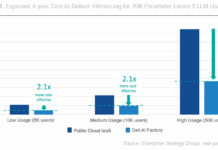By Murray Crow, Managing Director, Kwikot Powered by Haier
Africa’s hospitality sector is riding a wave of optimism. The 2024 African Hospitality Confidence Index reports that 80% of operators are positive about the medium to long-term future of the industry. Business travel and tourism are rebounding, ‘bleisure’ is on the rise and international hotel brands are rapidly expanding their African portfolios – with 482 new hotels and over 84,000 rooms currently in development across the continent.
But as guest experiences become more dynamic and digitally enhanced, the physical realities of hospitality operations often lag behind. Nowhere is this more evident than in back-of-house infrastructure – especially in the kitchens, sculleries and prep areas that power service delivery.
Behind the buffet: an infrastructure challenge hiding in plain sight
Reliable catering infrastructure may not top the list of executive talking points, but it’s critical to daily operations. From stainless steel sinks and prep tables to compliant drainage and shelving systems, this equipment forms the backbone of hospitality environments.
However, across hotels, lodges and resorts, many operators are facing a silent but costly issue: back-of-house systems that are outdated, poorly designed for volume, or mismatched to current hygiene and compliance needs.
According to internal sales data from Kwikot Powered by Haier, demand for commercial-grade stainless steel scullery and prep systems has grown by 18% year-on-year over the past 18 months. Clients across the country – ranging from independent boutique lodges to large hospitality groups report consistent pain points:
- Workflow bottlenecks in high-volume kitchens
- Hygiene concerns stemming from poor drainage or ageing materials
- Delayed renovations due to global supply chain disruptions affecting imported steel products
“We’re seeing a real shift in how hospitality operators think about their kitchens and scullery spaces,” says Murray Crow. “Whether it’s a five-star city hotel or a rural game lodge, the challenges are surprisingly similar – workflows under pressure, outdated fixtures and infrastructure that simply hasn’t kept up with demand.”
In one case, a coastal conference venue with over 180 rooms found its outdated prep layout was directly contributing to food waste and friction between kitchen and front-of-house staff. It wasn’t a staffing issue – it was a legacy infrastructure problem in a sector that has evolved past it.
A local response to regional realities
Africa’s hospitality boom is not one-size-fits-all. Infrastructure resilience in Cape Town looks different from the needs of hospitality operators in Lusaka or Accra. Energy reliability, humidity, sanitation protocols and space constraints all influence how equipment performs in real-world settings.
This is why many operators are moving away from “off-the-shelf” international imports in favour of locally manufactured stainless-steel systems designed for South African regulations, installed quickly, and supported by a regional service network.
The back-of-house is the next frontier for hospitality investment
While the Confidence Index shows that over 50% of businesses now use dynamic pricing to optimise guest revenue, many have yet to apply this same strategic lens to infrastructure. That’s a missed opportunity. Back-of-house efficiency directly influences labour cost, guest service flow, compliance outcomes, and long-term asset performance.
If the hospitality sector wants to future-proof its growth, it must begin to invest in the systems that enable consistency behind the scenes. This includes catering infrastructure that can scale, clean, withstand, and quietly perform every day.
Looking ahead: Excellence begins offstage
As we return to the Hotel and Hospitality Expo in Cape Town this June, the conversation will naturally focus on digital transformation and guest experience. But it’s worth remembering that what defines a five-star stay often starts out of sight, in the kitchens, sculleries and prep zones where real hospitality happens.
The brands that succeed in this next phase won’t just have smart tech and sleek foyers. They’ll have resilient, localised infrastructure that supports their teams, their standards and their service promises – every single day.
Article Provided



























